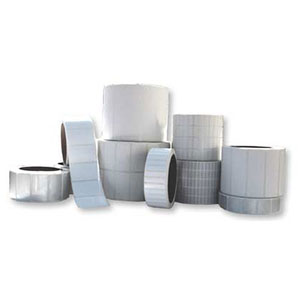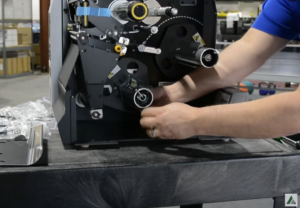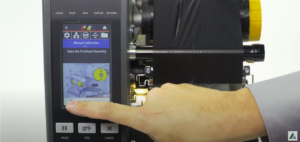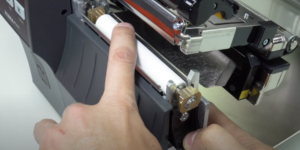What is the difference between Direct Thermal and Thermal Transfer?
 There are two thermal printing methods: direct thermal (DT) and thermal transfer (TT). Each method uses a printhead that applies heat to the surface being marked. Thermal transfer printing uses a heated ribbon to produce durable, long-lasting images on a wide variety of materials. No ribbon is used in direct thermal printing, which creates the image directly on the printed material. Direct thermal media is more sensitive to light, heat and abrasion, which reduces the life of the printed material.
There are two thermal printing methods: direct thermal (DT) and thermal transfer (TT). Each method uses a printhead that applies heat to the surface being marked. Thermal transfer printing uses a heated ribbon to produce durable, long-lasting images on a wide variety of materials. No ribbon is used in direct thermal printing, which creates the image directly on the printed material. Direct thermal media is more sensitive to light, heat and abrasion, which reduces the life of the printed material.
In simplest terms, TT printing utilizes a ribbon and DT printing does not. Thermal transfer involves the printhead elements (dots) heating the backside of a thermal ribbon to melt and transfer the compounds on the front side of the ribbon to the label material, thus creating the printed image. Direct thermal printing requires a heat sensitive label material. The printhead elements come into direct contact with the heat sensitive material where the heat from the elements causes a color change in the material to create the printed image.
Label Life Requirements
Requirements surrounding label life get back to the heart of the difference between DT labels and TT labels… DT printed labels simply do not offer the same lifetime as a TT printed label. An organization must know its label life requirements before considering what type of label will be used.
If the product being labeled could be in the supply chain for an extended period of time or in extreme conditions such as direct sunlight or chemical contact, then the technology used should likely be a Thermal Transfer label. For example, building materials are often transported unprotected and stored outdoors. Not a good choice for a DT label. Another consideration would be if the information on the label is extremely critical and must be readable for an indeterminate amount of time. Examples might include pharmaceutical products or hazardous materials. These items should likely utilize TT printed labels to ensure a long lifetime.
Conversely, if the product has a short life in the supply chain and is not exposed to harsh environmental conditions, then Direct Thermal may very well be a good choice. Examples of this type product could include fresh meat, dairy products and shipped parcels. Regulatory requirements for privacy of information are another area impacting the use of direct thermal media. In healthcare, patient privacy can be at risk if personal information is available on used ribbon. This has led to an increased use of direct thermal media for prescription labels and patient wristbands, for example.






